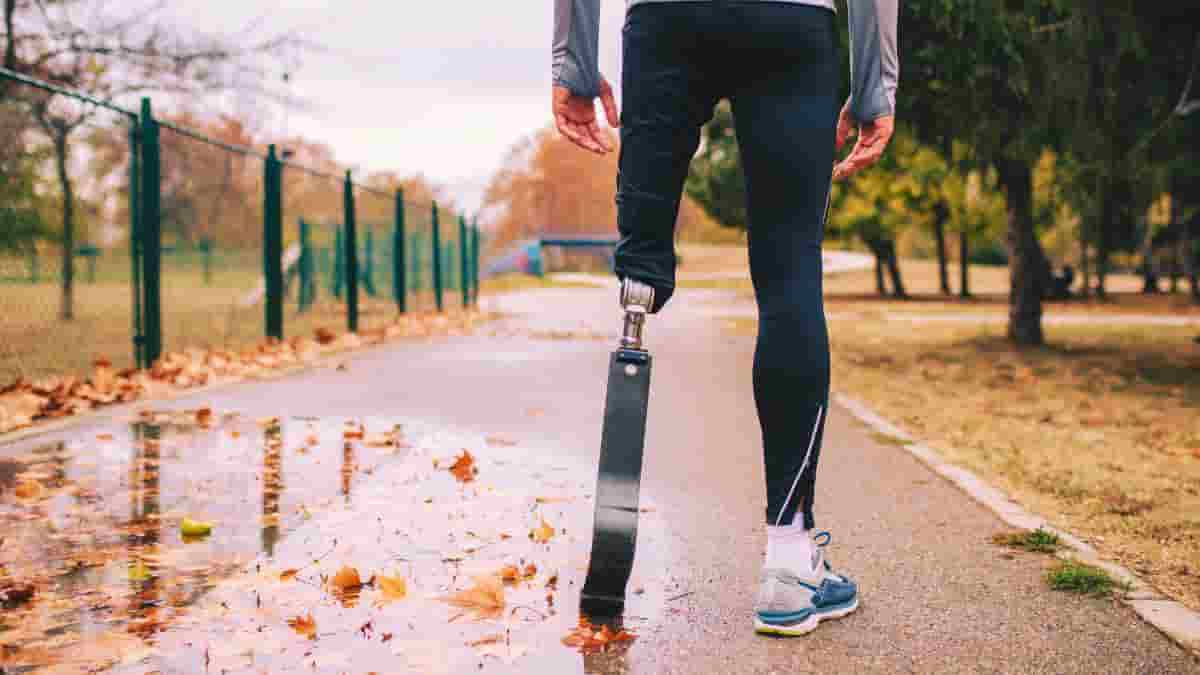A proof-of-concept study has found that spinal cord stimulation can elicit sensation in the missing foot and alleviate phantom limb pain in people with lower limb amputations.
Pressure sensors on a prosthetic foot’s insole triggered electrical pulses, which were subsequently sent to a participant’s spinal cord. This sensory feedback improved balance and gait stability, according to the researchers.
“We are using electrodes and stimulation devices that are already frequently used in the clinic and that physicians know how to implant. We are leveraging those technologies to produce meaningful improvement in function and reduction of pain. That’s exciting and we’ve been building it for a while,”
said senior author Lee Fisher, associate professor of physical medicine and rehabilitation at the University of Pittsburgh.
Restored Somatosensation
Among 1.5 million Americans who live with lower-limb amputation, 8 out of 10 experience some degree of chronic pain perceived as though coming from the missing leg or foot. This phantom limb pain often does not respond to pain medications and dramatically impairs the quality of life.
Furthermore, because even the most technologically advanced prosthetics lack sensory feedback functionality, amputees continue to be vulnerable to balance deficits and falls, further limiting their mobility.
Unlike the typical stimulation system that works by shutting down pain neurons by overriding them with another sensory signal — similar to how rubbing your sore elbow helps relieve the pain — Fisher’s group leveraged the existing spinal cord stimulation technology to restore sensory feedback by replacing the severed connections between sensory neurons in the missing foot and the central nervous system.
Balance Control and Gait Improvements
To allow researchers to modulate the intensity of sensations in response to varying pressure on a prosthetic foot while walking, a pair of thin electrode strands implanted over the top of the spinal cord in the lower back were linked to a cell phone-sized stimulation device that delivered electric pulses of varying amplitude and frequency.
In accordance with the study design, pain medicine specialists Eric Helm, an assistant professor of physical medicine and rehabilitation, and Vincent Miele, principal associate professor of neurosurgery, implanted the leads for a duration of one to three months. Subsequent to the conclusion of the trial, they were removed.
In contrast to earlier research by other groups, Fisher et al. established active control over spinal cord stimulation parameters, allowing subjects to engage their prosthetic leg while standing or walking.
In addition to clinically meaningful improvement in balance control and gait even in the most challenging conditions, such as standing on a moving platform with eyes closed, participants reported an average 70% reduction in phantom limb pain—a highly meaningful outcome given the lack of clinically available treatment options.
The beauty of this technology is its adaptability; as the pilot study showed, it may be used on individuals who have experienced severe amputations or have significant peripheral nerve loss as a result of long-term illnesses like diabetes. Additionally, it doesn’t require expensive, specially designed electrodes or unusual surgical techniques, which simplifies national scaling.
“We are able to produce sensations as long as the spinal cord is intact. Our approach has the potential to become an important intervention for lower-limb amputation and, with proper support from industry partners, translated into the clinic in the next five years,”
says Fisher.
Abstract
Restoring somatosensory feedback in individuals with lower-limb amputations would reduce the risk of falls and alleviate phantom limb pain. Here we show, in three individuals with transtibial amputation (one traumatic and two owing to diabetic peripheral neuropathy), that sensations from the missing foot, with control over their location and intensity, can be evoked via lateral lumbosacral spinal cord stimulation with commercially available electrodes and by modulating the intensity of stimulation in real time on the basis of signals from a wireless pressure-sensitive shoe insole. The restored somatosensation via closed-loop stimulation improved balance control (with a 19-point improvement in the composite score of the Sensory Organization Test in one individual) and gait stability (with a 5-point improvement in the Functional Gait Assessment in one individual). And over the implantation period of the stimulation leads, the three individuals experienced a clinically meaningful decrease in phantom limb pain (with an average reduction of nearly 70% on a visual analogue scale). Our findings support the further clinical assessment of lower-limb neuroprostheses providing somatosensory feedback.
Reference:
- Nanivadekar, A.C., Bose, R., Petersen, B.A. et al. Restoration of sensory feedback from the foot and reduction of phantom limb pain via closed-loop spinal cord stimulation. Nat. Biomed. Eng (2023). Doi: 10.1038/s41551-023-01153-8
